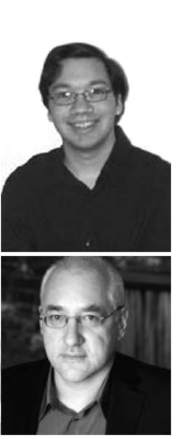Orchestral Underground: conversations
by Anne Eisenberg
Roger Zare, Time Lapse; Sebastian Currier, Next Atlantis; Paquito D’Rivera, Conversations with Cachao; Anne Manson, conductor; Zankel Hall, January 29, 2010

![]() The young American composer Roger Zare was inspired by photography when he wrote Time Lapse, an inventive and lovely orchestral piece that had its world premiere on January 29 at Zankel Hall in a concert of the American Composers Orchestra.
The young American composer Roger Zare was inspired by photography when he wrote Time Lapse, an inventive and lovely orchestral piece that had its world premiere on January 29 at Zankel Hall in a concert of the American Composers Orchestra.
Zare seeks to create a musical counterpart to time-lapse photography, where weeks-long processes like plants growing and budding are speeded up and shown in seconds. He is also interested in the opposite technique: high-speed photography, when the path of, for instance, a speeding bullet is slowed down and made visible in a series of exposures.
Zare’s piece (an ACO/Underwood commission) is a musical version of these visual expansions and contractions, but it’s heard instead of seen in vibrant, unusual music ingeniously orchestrated for strings, winds, brass and percussion to play with our sense of time.
The excellent conductor Anne Manson led the orchestra expertly through the complex score. In it, fast-moving packed passages full of glissandos, shimmering strings, echoing chimes and roaring climaxes change to attenuated, stretched-out passages punctuated with eerie but exhilarating sounds before snapping back again into fast, tumbling full orchestral lines.
Some of the unusual sound effects were achieved by the piano that had been “prepared,” in the manner of David Tudor, here with the addition of magnetic tape. For one effect, Peter Basquin, the pianist, held the free end of a long piece of ordinary magnetic tape of the kind found in cassette players. Before the performance, he tied one end of the two-to-three-foot piece of tape to the lowest C string on the piano. When the sound was called for, he pushed down the pedal on the piano and rubbed a finger along the magnetized side of the tape, creating an unusual bowing effect that separated and stretched out tones. Zare was inspired by photography in creating Time Lapse, but he wisely doesn’t dim the lights and add an attention-grabbing video of corn growing or plants budding. Instead, it was just the music that filled the mind and ear.

![]() That was not the choice of Sebastian Currier, whose work Next Atlantis (an ACO/Goelet commission) followed Zare’s on the program. Currier, interested in using stringed instruments to evoke the sounds of water, created two versions of Next Atlantis, one with string quartet and pre-recorded sound, another for string orchestra, pre-recorded sound, and an accompanying video created by Pawel Wojtasik.
That was not the choice of Sebastian Currier, whose work Next Atlantis (an ACO/Goelet commission) followed Zare’s on the program. Currier, interested in using stringed instruments to evoke the sounds of water, created two versions of Next Atlantis, one with string quartet and pre-recorded sound, another for string orchestra, pre-recorded sound, and an accompanying video created by Pawel Wojtasik.
It was the video version that premiered at the Zankel concert, shown from the beginning to the end of the piece in a continuous series of vivid and dramatic images that gradually drew away much of the impact of the elegiac music. In Next Atlantis, the strings imitate the sounds of water, and the sounds of water are heard, too, in the electronic gurgles and drips, and that come from the speakers ringing the hall. But the video shots of New Orleans and the surrounding bayou that accompany these sounds, especially the close-ups of the serious faces of people standing amidst the ruins created by the hurricane Katrina, steadily leech attention from the music.
No such visual competition happened in the second half of the program, which showcased a concerto by Paquito D’Rivera, Conversations with Cachao, based on traditional Cuban music. Before the music started, there was a short video of D’Rivera, talking about the man to whom he pays homage in the concerto, his friend and fellow musician Israel ‘Cachao’ Lopez. But the video didn’t share the stage with the music: D’Rivera waited until it was done to lead the concerto. He was the center of the performance, joking with the audience, tapping his feet in their two-tone shoes, and playing both solo clarinet and alto sax, often in duets with the expert bassist Robert Black. The eclectic music, combining mambos with the occasional Hungarian folk rhythms and even echoes of a bar mitzvah, delighted the audience. It was a frigid night in New York, and the winds were whistling down from the shallow lobby into the two stories of escalators at Zankel, creating what is probably New York City’s only concert location with a wind tunnel. But people were whistling D’Rivera’s warm Cuban melodies as they left in the chill. II